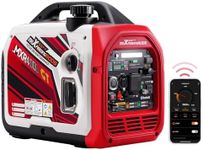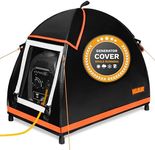Buying Guide for the Best 30 Amp Generators
Choosing the right 30-amp generator can be a crucial decision, especially if you need reliable power for your RV, home backup, or outdoor activities. To make an informed choice, it's important to understand the key specifications and how they relate to your specific needs. Here are some essential specs to consider when selecting a 30-amp generator.Power OutputPower output, measured in watts, indicates how much electrical power the generator can produce. This is important because it determines what appliances and devices you can run simultaneously. Generators typically range from 2,000 to 10,000 watts. For RVs and small homes, a generator with 3,000 to 5,000 watts is usually sufficient. If you need to power larger appliances or multiple devices, consider a higher wattage. Assess your power needs by listing the devices you plan to use and their wattage requirements.
Fuel TypeGenerators can run on various fuel types, including gasoline, propane, and diesel. The fuel type affects the generator's efficiency, cost of operation, and ease of refueling. Gasoline generators are common and easy to refuel but may require more maintenance. Propane generators are cleaner and have a longer shelf life for fuel but may be less powerful. Diesel generators are efficient and durable but can be more expensive. Choose a fuel type based on availability, cost, and your preference for maintenance.
RuntimeRuntime refers to how long the generator can operate on a full tank of fuel. This is crucial for planning how long you can rely on the generator without needing to refuel. Generators with longer runtimes are beneficial for extended use, such as during power outages or long camping trips. Look for generators that offer runtimes of 8 to 12 hours at half load for a balance between fuel efficiency and operational time. Consider your typical usage duration to determine the appropriate runtime.
PortabilityPortability is important if you plan to move the generator frequently, such as for camping or outdoor events. Portable generators are designed to be lightweight and often come with wheels and handles for easy transport. They typically weigh between 50 to 150 pounds. If you need a generator for stationary use, such as home backup, portability may be less critical. Evaluate how often and where you will use the generator to decide on the necessary level of portability.
Noise LevelNoise level, measured in decibels (dB), indicates how loud the generator will be during operation. This is important for comfort and compliance with noise regulations, especially in residential areas or campgrounds. Generators can range from 50 dB (quiet) to over 80 dB (loud). For RVs and camping, a quieter generator (below 60 dB) is preferable to avoid disturbing others. Consider where you will use the generator and choose a noise level that suits your environment.
Starting MechanismThe starting mechanism determines how you start the generator. Common options include manual recoil start, electric start, and remote start. Manual recoil start is reliable but requires physical effort. Electric start is convenient and easy to use, often with a push-button. Remote start allows you to start the generator from a distance, adding convenience. Choose a starting mechanism based on your preference for ease of use and convenience.
Safety FeaturesSafety features are crucial for preventing accidents and ensuring safe operation. Look for generators with features like automatic shutoff for low oil levels, overload protection, and circuit breakers. These features help protect the generator and connected devices from damage. Consider the importance of safety in your usage scenario and prioritize generators with comprehensive safety features.

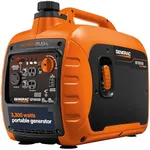

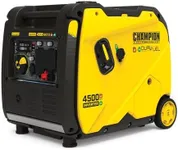




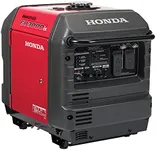

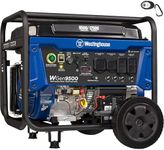

![[Upgraded Version] ALLPOWERS S2000 Portable Power Station 2000W (Peak 4000W) MPPT Solar Generator 1500Wh Backup Battery with 4 AC Outlets for Outdoor Camping RV Emergency Off-Grid](https://images-proxy.bestreviews.guide/YtTaRg6uNv-LaNq9_7sPyzjq62s=/0x150/https://m.media-amazon.com/images/I/31g7wSEKaOL._AC_CX679_.jpg)
